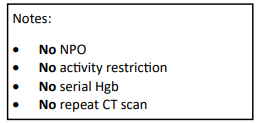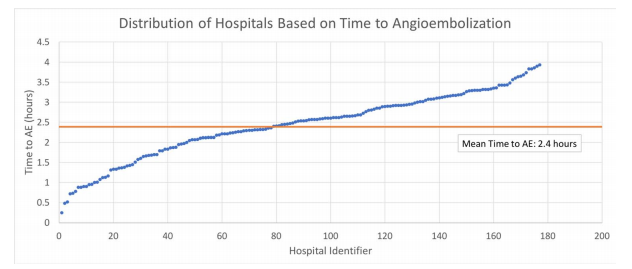Venous thromboembolic disease (VTE) continues to be a major issue in trauma patients. Most trauma centers have prophylaxis guidelines to try to reduce this problem. These guidelines typically recognize specific injuries that increase the risk of bleeding if anticoagulants are given. Typical ones include hemorrhagic injuries to the brain, pelvic and spine fractures, and solid organ injuries.
Typically, VTE prophylaxis starts immediately upon admission. But when these high-risk injuries are present, it is usually delayed for a period of time. Unfortunately, that period may be highly variable. Many centers have adopted 2-3 days to delay administration of low molecular weight heparin in patients with solid organ injury.
The AAST initiated a prospective multi-institutional trial comparing early (<48 hours after admission) and late (>48 hours) administration of prophylactic agents. Patients were older than 16 years, had any number of liver, spleen, or kidney injuries, and were initially treated nonoperatively. Patients who were transferred, died in the ED, were pregnant, had a bleeding disorder, or were taking anticoagulants or platelet inhibitors were excluded. A power analysis was performed, and more than the needed number of patients were enrolled.
Here are the factoids:
- A total of 1173 patients were enrolled, and there were 589 liver injuries, 569 spleen injuries, and 289 kidney injuries
- About 75% of patients (864) had early prophylaxis
- Patients were younger (median 34 years), and two-thirds were male, with a median ISS of 22
- Early VTE prophylaxis patients had significantly lower rates of VTE (3% vs. 7%)
- There was no significant difference in failure of nonoperative management (5% early vs. 7% late)
- The early prophylaxis group received fewer units of blood after prophylaxis started (17% vs. 23%)
- Patients receiving VTE prophylaxis after 48 hours were 2.2x more likely to develop VTE
The authors concluded that early VTE chemoprophylaxis was associated with lower rates of VTE with no increase in complications. They recommended that it should become the standard of care for these patients.
Bottom line: Seeing such a well-designed and nicely executed study is refreshing. If the facts are borne out in the final manuscript review, this should become the standard of care for VTE prophylaxis in patients with solid organ injuries.
I wish the authors would have stipulated that the chemoprophylaxis was required to be low molecular weight heparin. Unfortunately, there are still more than a few centers using unfractionated heparin. There could be a difference in efficacy and failure rates between the two. This could complicate the statistical analysis. Hopefully, the presenter will address this during the meeting.
I would also like to see a breakdown of when the early VTE prophylaxis actually started. Were they all close to 48 hours? Or were there enough at 24 hours to show this is also safe and effective?
It’s time for everyone to review their VTE prophylaxis guidelines. Get ready to make some major changes in your patients with solid organ injury!
Reference: When is it safe to start VTE prophylaxis after blunt solid organ injury? A prospective AAST multi-institutional trial. AAST 2023, Plenary paper #23.


